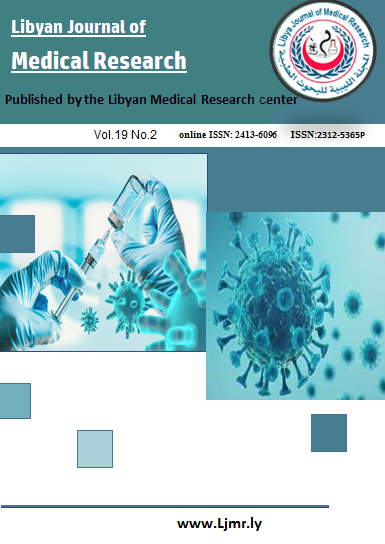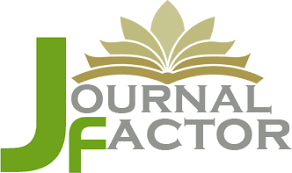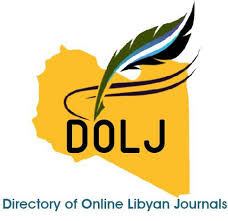Anti-Urolithiasis Potential of Phagnaion rupestre: In Vitro Evaluation of Crystal Formation, Aggregation Inhibition, and Stone Dissolution
DOI:
https://doi.org/10.54361/LJMR.19.2.03Keywords:
Anti-Urolithiasis, Phagnaion rupestre, Potential, Dissolution, StoneAbstract
Purpose: Urolithiasis, commonly known as kidney stones, is a prevalent condition associated with significant discomfort. Traditional treatments often come with high costs and potential side effects. The use of medicinal plants has gained popularity as a safer, cost-effective alternative. This study aimed to evaluate the anti-urolithiasis potential of Phagnaion rupestre, a plant native to the arid regions of Libya, by assessing its effects on calcium oxalate crystal formation, aggregation, and dissolution.
Aim: This study aimed to determine the anti-urolithiasis activity of Phagnaion rupestre through in vitro assays, focusing on crystal formation inhibition, aggregation inhibition, and stone dissolution.
Materials and Methods The aqueous extract of Phagnaion rupestre was tested at varying concentrations (250, 500, 750, 1000 μg/mL) for its ability to inhibit calcium oxalate crystal formation, aggregation, and promote the dissolution of pre-formed stones. Synthetic urine and synthetic kidney stones were used for the assays, and the phytochemical profile of the extract was analyzed.
Results: The results indicated that Phagnaion rupestre significantly inhibited calcium oxalate crystal formation, with up to 68% inhibition at the highest concentration. Aggregation inhibition was also observed to be dose-dependent, with up to 70% inhibition. Additionally, the extract enhanced the dissolution of pre-formed stones, reaching a dissolution rate of 70%. The phytochemical analysis revealed the presence of bioactive compounds such as phenols, flavonoids, and alkaloids, which are likely contributing to these effects.
Conclusion: Phagnaion rupestre demonstrated promising anti-urolithiasis activity by inhibiting calcium oxalate crystal formation, preventing aggregation, and enhancing stone dissolution. These results suggest that Phagnaion rupestre could be a potential natural remedy for the prevention and management of kidney stones, offering a safer alternative to conventional treatments.
Downloads
References
1. Agrawal KK, Agrawal N, Jadon N, Gangwar K, Jain S, Sharma N, et al. Determination of extractive value, phytochemical constituents, and in-vitro anti-urolithiatic activity of Embelia ribes Burm. F. and Ipomea Hederacea Jacq. Res J Pharm Technol. 2021.
2. Wanderley L, Silva A, Pereira A. Recurrence rates of kidney stones after treatment: A 5-year follow-up study. J Urol. 2018;200(5):1034-1039. doi: 10.1016/j.juro.2018.07.058.
3. Yadav S, Kumar V, Soni S. Herbal and traditional therapies in urolithiasis management. Phytother Res. 2021;35(5):1072-1085. doi: 10.1002/ptr.6928.
4. Sharma S, Singh R, Kumar R. Cinnamomum verum in urolithiasis: A review of its effects on kidney stone dissolution. J Med Plants Res. 2016;10(2):35-41. doi: 10.5897/JMPR2015.4970.
5. Sangeetha S, Vignesh P, Rajendran S. Phytochemical constituents and their biological activities of Glycyrrhiza glabra. Res J Med Plants. 2014;8(3):151-159. doi: 10.3923/rjmp.2014.151.159.
6. Harshita P, Yasaswi P, Rajeshwari M, Jyothi V, Sonali K. Anti-urolithiasis activity of Vaccinium macrocarpon fruits: An in vitro study. J Med Plants Stud. 2020;8:25-31.
7. Sharma P, Singh A, Kumar N. Cystone as a treatment for urolithiasis: An in vitro study. J Ethnopharmacol. 2015;174:217-224. doi: 10.1016/j.jep.2015.07.041.
8. Dwivedi S, Narsinghani T. In vitro investigation of anti-urolithiatic potential from different types of hydroalcoholic plant extracts. Int J Zoological Investig. 2023.
9. Latif A, Azhar F, Rafay MZ, Iqbal A, Anwar I. Phytochemical screening and in vitro anti-urolithiatic activity of fruit-seed extracts of Melia azedarach. Jordan J Pharm Sci. 2023.
10. Haque M, Al-Shami A, Chatterjee S. Evaluation of anti-urolithiatic activity of Dolichos biflorus seed extract by using ethylene glycol-induced model. J Pharm Res Int. 2022.
11. Sharma P, Singh A, Kumar N. Cinnamomum verum in urolithiasis: A review of its effects on kidney stone dissolution. J Med Plants Res. 2016;10(2):35-41. doi: 10.5897/JMPR2015.4970.
12. Nayana S, Suman S, Patil D. Inhibitory effects of Tribulus terrestris extract on calcium oxalate crystallization: A study on its anti-urolithiasis activity. Phytother Res. 2016;30(8):1263-1272. doi: 10.1002/ptr.5695.
13. Verma RK, Singh A, Purohit A. Ocimum sanctum and its role in inhibiting calcium oxalate crystallization: A new perspective for kidney stone therapy. BMC Complement Altern Med. 2017;17(1):142-147. doi: 10.1186/s12906-017-1711-2.
14. Bhardwaj A, Sharma P, Gupta A. Efficacy of Asparagus racemosus in the treatment of kidney stones: A comprehensive review. J Herb Med. 2018;12(3):58-66. doi: 10.1016/j.hermed.2018.04.001.
15. Zhang Q, Li P, Li G. Antioxidant and anti-inflammatory properties of Tribulus terrestris: Implications for urolithiasis management. J Ethnopharmacol. 2015;164:234-241. doi: 10.1016/j.jep.2015.01.021.
16. Sangeetha S, Vignesh P, Rajendran S. Phytochemical constituents and their biological activities of Glycyrrhiza glabra. Res J Med Plants. 2014;8(3):151-159. doi: 10.3923/rjmp.2014.151.159.
17. Abdulsalam F, Magayr T, Shamsi SS. In vitro inhibition of calcium oxalate crystallization by Phagnalon rupestre aqueous extract. J Med Sci. 2023;18(3):13-15.
Downloads
Published
Issue
Section
License
Copyright (c) 2025 Tajdida Magayr, Fatima Abdulsalam (Author)

This work is licensed under a Creative Commons Attribution-NonCommercial-NoDerivatives 4.0 International License.
Open Access Policy
Libyan journal of medical Research (LJMR).is an open journal, therefore there are no fees required for downloading any publication from the journal website by authors, readers, and institution.
The journal applies the license of CC BY (a Creative Commons Attribution 4.0 International license). This license allows authors to keep ownership f the copyright of their papers. But this license permits any user to download , print out, extract, reuse, archive, and distribute the article, so long as appropriate credit is given to the authors and the source of the work.
The license ensures that the article will be available as widely as possible and that the article can be included in any scientific archive.
Editorial Policy
The publication of an article in a peer reviewed journal is an essential model for Libyan journal of medical Research (LJMR). It is necessary to agree upon standards of expected ethical behavior for all parties involved in the act of publishing: the author, the journal editorial, the peer reviewer and the publisher.
Any manuscript or substantial parts of it, submitted to the journal must not be under consideration by any other journal. In general, the manuscript should not have already been published in any journal or other citable form, although it may have been deposited on a preprint server. Authors are required to ensure that no material submitted as part of a manuscript infringes existing copyrights, or the rights of a third party.
Authorship Policy
The manuscript authorship should be limited to those who have made a significant contribution and intellectual input to the research submitted to the journal, including design, performance, interpretation of the reported study, and writing the manuscript. All those who have made significant contributions should be listed as co-authors.
Others who have participated in certain substantive aspects of the manuscript but without intellectual input should only be recognized in the acknowledgements section of the manuscript. Also, one of the authors should be selected as the corresponding author to communicate with the journal and approve the final version of the manuscript for publication in the LJMR.
Peer-review Policy
- All the manuscripts submitted to LJMR will be subjected to the double-blinded peer-review process;
- The manuscript will be reviewed by two suitable experts in the respective subject area.
- Reports of all the reviewers will be considered while deciding on acceptance/revision or rejection of a manuscript.
- Editor-In-Chief will make the final decision, based on the reviewer’s comments.
- Editor-In-Chief can ask one or more advisory board members for their suggestions upon a manuscript, before making the final decision.
- Associate editor and review editors provide administrative support to maintain the integrity of the peer-review process.
- In case, authors challenge the editor’s negative decision with suitable arguments, the manuscript can be sent to one more reviewer and the final decision will be made based upon his recommendations.












